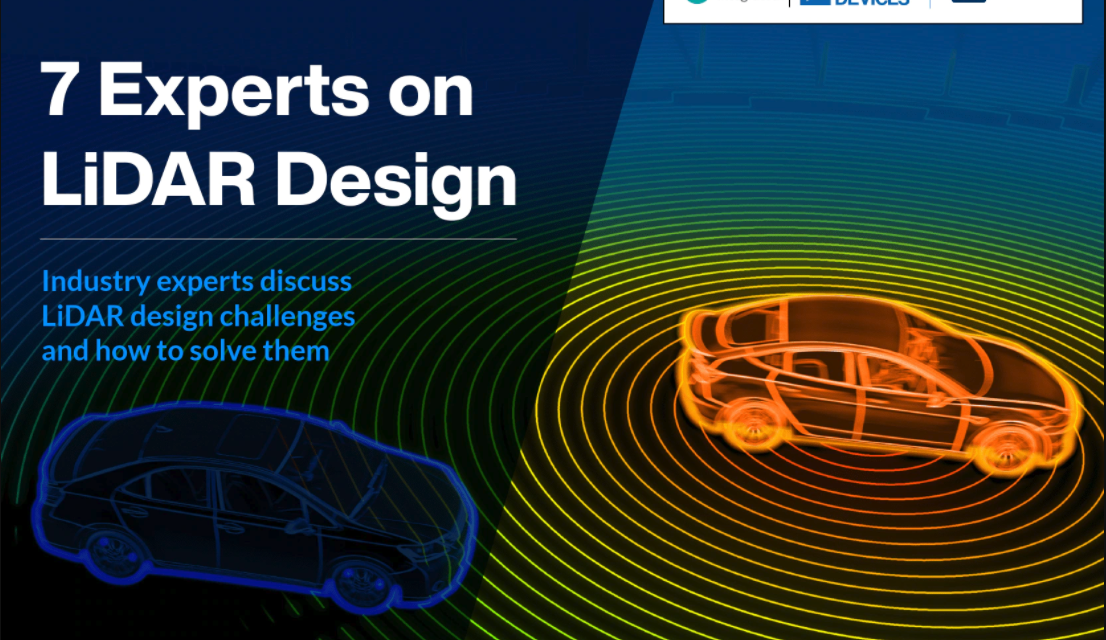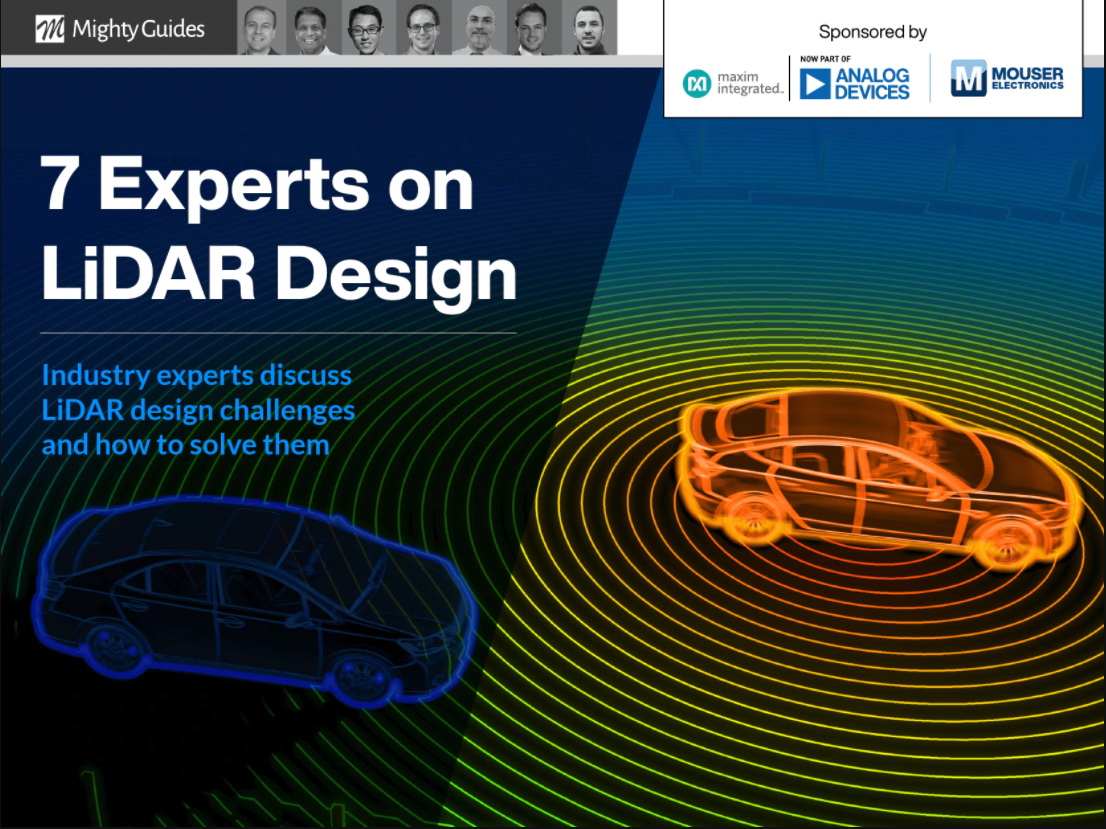-
Issa Malke, LiDAR Calibration Engineer, Velodyne LiDAR, Inc.
-
Silas Gschwender, International Applications Engineer, SICK Sensor Intelligence
-
Giray Kömürcü, Chief Design Engineer, TUBITAK
- Binay Kumar Bajaj, Director of Business Management, Maxim Integrated
-
Kai Zhou, ADAS Sensor Engineer, Ansys
-
Andrew Beaulieu, Robotics Engineer, Toyota Research Institute
-
Maurizio Gavardoni, Product Definition Engineer, Maxim Integrated
7 Experts on LiDAR Design Was generously sponsored by Maxim Integrated and Mouser Electronics.
Sensors give electronic systems awareness of their environment, enabling amazing advances in
autonomy. Specifically, Light Detection and Ranging, or LiDAR, uses pulsed lasers to determine the
distance of objects quickly and accurately. Originally used for topographic surveying, today’s small
and light LiDAR systems give products vision, both depth perception and accurate positioning.
In autonomous vehicles, LiDAR serves as the eye that provides a 360-degree view for navigation
and collision avoidance. In smart infrastructure, LiDAR makes roads safer by monitoring pedestrian
and vehicle traffic. In robotics and industrial systems, 3D vision increases safety, automation, and
intelligence. LiDAR also reveals what is invisible to the naked eye, using different wavelengths to detect
atmospheric pollutants.
Key to LiDAR is accurate measurement of time of flight. Essential Analog products from Maxim
Integrated (now part of Analog Devices) deliver the highest accuracy. Innovations include
transimpedance amplifiers (TIA) with low noise and extremely high bandwidth, and high-speed
comparators with very low propagation delay. High integration, more channels, and wafer scale
packaging enable small solutions. Supervisor and protection devices create robust systems with
enhanced reliability in rugged environments.
We hope this publication provides you with inspiration as you explore solutions for adding LiDAR
capabilities to your next system.




